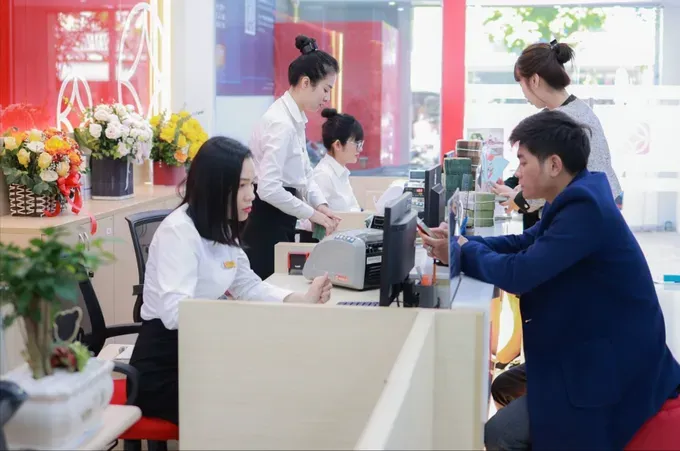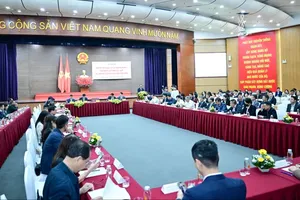
Additional VND2.1 quadrillion injected into the economy
Despite global and domestic economic fluctuations, credit expansion over the first ten months of 2025 has been remarkable. The majority of new capital continued to flow into production and business activities, underscoring the banking sector’s role in supporting enterprises and sustaining economic momentum. At the same time, property lending accelerated, surpassing the industry’s average growth rate and signaling renewed confidence in the real estate market.
Director Pham Chi Quang of the Monetary Policy Department at the State Bank of Vietnam (SBV) reported that the banking system injected an additional VND2.1 quadrillion (US$79.8 billion) into the economy during this period. This infusion of capital has provided critical support for businesses navigating supply chain disruptions, rising input costs, and shifting global demand.
With this pace of expansion, annual credit growth is projected to reach around 19 percent–20 percent by year’s end, the highest level in nearly 15 years.
As of September 29, 2025, total outstanding credit across the system stood at VND17.71 quadrillion, up nearly 13.4 percent from the end of 2024. The credit structure continues to prioritize production and business sectors, which account for approximately 78 percent of total outstanding loans: commerce and services (69.8 percent), industry and construction (23.97 percent), and agriculture, forestry, and fisheries (6.23 percent). The SBV affirmed that this orientation aligns with government policies focusing on production, processing, exports, and enterprise digital transformation.
In Ho Chi Minh City alone, total outstanding credit was estimated at nearly VND4.92 quadrillion as of October 31, 2025, up 9.79 percent compared to the end of 2024.
Deputy Director Tran Thi Ngoc Lien of SBV Branch Region 2 in Ho Chi Minh City and Dong Nai Province noted that the city’s banking sector remains focused on supplying credit to production and business activities and has actively participated in initiatives to support enterprises and promote local economic growth. Programs such as lending to five priority sectors, market stabilization loans, bank–business connectivity schemes, the VND150 trillion credit package for agricultural and forestry processing enterprises, and agricultural–rural lending under Decrees 116/2018 and 55/2015 have all seen positive expansion.
Credit growth trends are also reflected in the third-quarter financial reports of commercial banks. Many institutions recorded growth significantly above the industry average, primarily driven by lending for production and essential business activities.
HDBank’s outstanding credit rose 22.6 percent in the first nine months, focusing on priority and essential sectors. VPBank achieved 28.4 percent credit growth thanks to contributions from the parent bank and subsidiaries, expanding lending across regions, industries, and key sectors including a 29.1 percent increase in small and medium-sized enterprise (SME) loans.
Meanwhile, BIDV reported a credit increase of over VND23.6 trillion (up 7.2 percent), with the strongest growth in science and technology lending (up 43.7 percent) and agricultural loans making up 21 percent of its portfolio.
Economists noted that stable interest rates and flexible exchange rate management have created favorable conditions for strong credit expansion. By the end of 2025, deposit rates are expected to remain stable with slight seasonal increases, while lending rates are likely to stay low to support production and business activities.
UOB Vietnam also forecast that system-wide credit growth could reach 19–20 percent this year, surpassing the SBV’s initial target of 16 percent, thanks to stable monetary policy and recovering credit demand.
Tighter oversight urged
While bank capital continues to prioritize production and business sectors, real estate credit has been expanding at a faster pace than the overall market, prompting calls for closer supervision to mitigate financial risks. According to the State Bank, by the end of August 2025, outstanding real estate credit exceeded VND4 quadrillion, up 19 percent year-on-year and accounting for 23.68 percent of total outstanding loans in the economy.
Notably, loans for real estate business activities reached VND1.79 quadrillion, up nearly 24 percent, while consumer and self-use loans totaled VND2.28 quadrillion, up more than 12 percent. The strong surge in property prices during 2024–2025 has been partly driven by “cheap money,” which fueled speculative investment and higher leverage ratios among investors. As lending rates rise, the use of excessive leverage heightens financial vulnerability making it essential to control capital inflows into the property sector.
Chief Economist at BIDV Can Van Luc observed that although real estate credit rose by 19 percent, most of the increase went into investment and business segments, indicating that speculative capital flows remain inadequately restrained while market liquidity has yet to recover. He suggested that Vietnam diversify its property financing channels, reduce reliance on bank credit, and establish a National Housing Fund to provide long-term capital for social and affordable housing projects.
Amid concerns over overheated real estate credit, SBV’s Regional Branch 2 recently issued a warning against loans used to pay deposits via consulting or brokerage contracts. The branch instructed credit institutions in the region to temporarily suspend lending for deposit payments under such agreements or similar forms pending official guidance from competent authorities.
Recently, the People’s Court of Ho Chi Minh City’s District 7 ruled in a case that certain deposit agreements covering deposit amounts, schedules, payment methods, and refund conditions were invalid for violating prohibitions under the Civil Code. The court deemed the agreements null and void due to their noncompliance with legal provisions.
Experts voice their opinions to redirect capital toward social and affordable housing
Member of the Prime Minister’s Economic Advisory Council Le Xuan Nghia said that outstanding real estate credit, at around VND4 quadrillion or roughly 24 percent of total system-wide credit, is not excessively high compared with many developed economies, where it can reach 40 percent. However, the key solution lies in channeling credit more rationally—toward social and affordable housing rather than speculative or luxury projects.
To achieve this, Vietnam must address legal bottlenecks, expand housing supply, and improve preferential credit policies. The VND145 trillion lending package for social housing has been disbursed slowly due to limited project availability, strict loan conditions, and relatively high interest rates. These factors should be adjusted to enhance the program’s effectiveness.













)

)








